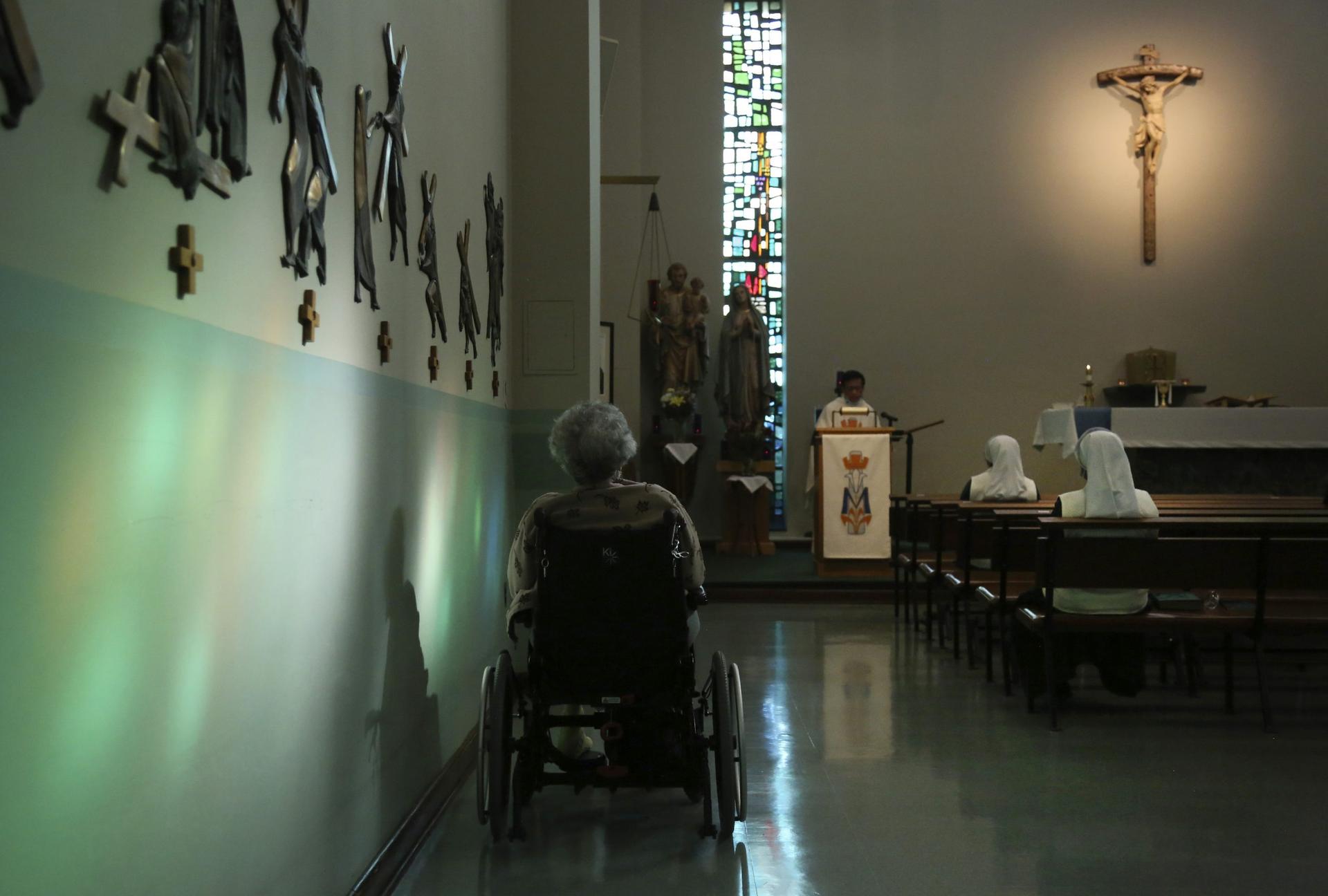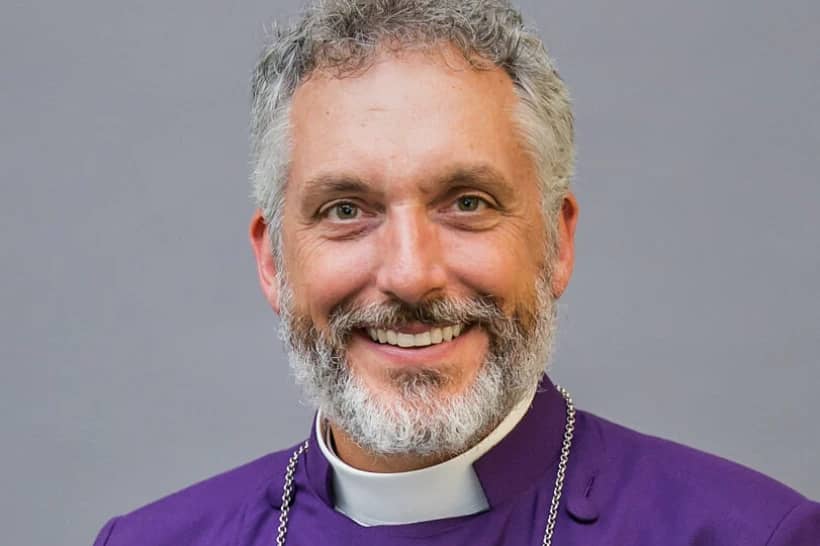GREENSBURG, Pennsylvania — The nuns’ daily email update was overtaken by news of infections. Ambulances blared into the driveways of their convents. Prayers for the sick went unanswered, prayers for the dead grew monotonous and, their cloistered world suddenly caving in, some of the sisters’ thoughts were halting.
“How many of us,” Sister Mary Jeanine Morozowich wondered, “will be left?”
These were women who held the hands of the dying and who raised the unwanted, who pushed chalk to slate to teach science and grammar and, through their own example, faith. And when the worst year was over, the toll on the Felician Sisters was almost too much to bear: 21 of their own, in four U.S. convents, who collectively served 1,413 years, all felled by the virus.

The pierce of syringes is bringing the darkest days to an end. Quarantines are being lifted. And as sisters emerge, there is a wrenching grief over their losses and a nagging need to know what it all means.
“There’s got to be a reason,” Morozowich says of her survival. “What is God asking me to do?”
Before lives turned inward and smiles were hidden by masks, before an always-climbing count of the dead and a constantly changing forecast of when this all will be over, there were things you could count on.
And at the St. Anne Home in Greensburg, it was Sister Mary Evelyn Labik.



At the front desk, she met a panoply of visitors with the sort of genuine warmth that made it impossible to say no when she came selling calendars or candy for a fundraiser. When the sun sliced through the stained glass and streaked the chapel’s walls with pastels, she was there along the aisle, sixth pew on the left. When it was warm, she’d stare with contented fascination as a hummingbird whirred toward a feeder on the porch, and when the nights grew long, she’d be in her tan recliner when “NCIS” lit the TV like a strobe.
As a child, she was taught by Felicians, growing in admiration for the friendliness they showed her.
“Now I desire to be one of them,” she wrote as she entered the convent in 1960.
She thrived in roles that capitalized on her compassion, as a kindergarten teacher and nurse’s aide, as a caregiver to profoundly disabled children and as a helper at a high school. Students were so drawn to her they took to calling her “Mom E” — the E for Evelyn — and some would write her for decades after.
She’d arrived 26 years earlier in Greensburg, where the convent is tucked in a complex with a nursing home and the seven sisters occupy tiny rooms on a spartan hallway with a communal bathroom in the center. For swaths of time, she served as local minister, a house mother of sorts who both helps direct the logistics of community life and gently guides a family of sisters in their spirituality.
At Christmas, she’d fill cloth sacks with simple gifts like towels and shampoo, and when a new sister arrived, she scurried to make them feel at home. When Sister Amala Jose, who is 44, came from her native India, Labik excitedly welcomed her and added mangoes, ginger paste and habaneros to the shopping list.



“Something she knows we like,” said Jose, who is a part of the Daughters of Mary community, but lives with the Felicians. “Just like a parent bringing things for the kids.”
As the pandemic unfurled its brutality, Labik sounded motherly notes of caution, reminding sisters to wash their hands and buy more sanitizing wipes, even when they’d barely put a dent in their supply.
And when sisters at the convent in Livonia, Michigan, began being rushed to the hospital last March, she couldn’t hide her alarm, scurrying to share the troubling news.
On Good Friday, Sister Mary Luiza Wawrzyniak became the sisters’ first casualty in Livonia, a blow that landed with stunning intensity for the women who’d known her for decades.
“My heart just leaped,” said Sister Nancy Marie Jamroz, 79, who had known Wawrzyniak since entering the convent and was one of her closest friends. “She was my little buddy.”
Wawrzyniak’s teaching days were ended by multiple sclerosis, but she continued contributing any way she could, shuffling behind a wheelchair to work in the laundry room and remembering every birthday with a card.
Jamroz called her “Sunshine.” Wawrzyniak called her “Moonshine.”
On Easter Sunday, it was Sister Celine Marie Lesinski, a teacher, organist and librarian, and Sister Mary Estelle Printz, who put aside an early life working at Chrysler to take her vows. Then, Sister Thomas Marie Wadowski, who relished a game of canasta and telling of her second-grade class that won a contest to create a Campbell’s Soup commercial, and Sister Mary Patricia Pyszynski, who taught in 13 schools across Michigan in six decades as an educator. Others were clinging to life.



“How could this be?” asked Morozowich, who was on a brief sabbatical from Greensburg as it unfolded. “What’s happening? What is going on? Is there a purification taking place? Why are so many sisters dying?”
Among hundreds of communities of Catholic sisters, the Felicians have neither the ubiquity of bigger ones like the Salesians, nor the singular focus of those like the School Sisters of Notre Dame, nor the repute of women following in Mother Teresa’s footsteps in the Missionaries of Charity. But they are scattered like mustard seeds across the continent and beyond, from a clinic in Jacmel, Haiti, to a preschool south of the Arctic Circle in Tulita, Canada, running affordable housing, ministering to inmates, teaching in schools and, time and again, focusing their work on the poor, disabled and sick.
Wherever they were, what was happening at the convent in Livonia was gripping.
Confined to their rooms as they desperately tried to stop the spread, the sisters cracked their doors in the morning to collect breakfast trays. They peered down the hallway to see if a new sign appeared bearing the news, in dark marker on plain printer paper, that the night had taken another.
When it did, they absorbed it alone, pinching rosaries and mouthing the same words again and again.
“May our sister,” they asked, “enter the kingdom of peace and light.”
After the first week of the crisis claimed five sisters, the second week took five more.

Sister Mary Clarence Borkoski, whose long ministry included work in a food pantry. Sister Rose Mary Wolak, whose two stints working in the Vatican brought brushes with St. John Paul II. Sister Mary Janice Zolkowski, who wrote a definitive 586-page history of the Felicians. Sister Mary Alice Ann Gradowski, who as a principal could be seen cheering, with fierce loyalty, in the bleachers at basketball games. And Sister Victoria Marie Indyk, who led mission trips to Haiti where she insisted students fill their luggage with clothes and medicine and toys going to the hemisphere’s neediest.
Each passing reverberated. Some sisters lost someone they’d known since they were teenagers, or with whom they had shared a home for decades. Others had felt a distant kinship from a shared calling, or had been graced with passing kindnesses when they fell ill or lonely or had reached out for help.
Morozowich heard of Zolkowski’s death and remembered how when she was a student in need of the historian’s expertise, she received eager support from a woman she had not yet met.
“When Janice died,” 74-year-old Morozowich said, “it was like I was stabbed in the heart.”
The anguish persisted.
The deaths came with speed and magnitude. As painful as they were, they were delivered on an aging community in which the end is spoken about with comfort borne in their belief that eternal salvation awaits. For women whose lives are steeped in tradition and faith, the losses themselves were dwarfed by the agony of not being able to make good on their long-held promise: No one dies alone.
As the end neared again and again, they couldn’t surround their sister, grasping her as they recited the Hail Mary, its final words pregnant in the weight of the moment: “Now and at the hour of our death.”
Sister Mary Martinez Rozek, who taught English to immigrants. Sister Mary Madeleine Dolan, stirred by two disabled siblings to become a special education teacher. Sister Mary Danatha Suchyta, the brilliant student who entered the convent as a seventh-grader and rose to become a university president.
And then finally, it seemed, after 13 were killed in Livonia, maybe the worst was past.

As some convents remained locked down, the Greensburg sisters were able to maintain a semblance of normalcy in their small convent, walled off from most visitors but finding joy in their rhythms of gathering for meals and for the daily bookends of religious life — morning and evening prayers.
For all the darkness that had entered the sisters’ world, summer brought glimpses of light.
On the porch, Labik hung a basket overflowing with purple flowers, and filled planters with daisies, impatiens and begonias, and when July 4 came, she twirled sparklers. In the living room, she came to relish the game shows other sisters introduced her to, and in the kitchen, her voice would drip with tongue-in-cheek judgment in an ongoing debate on hazelnut coffee vs. traditional roast.
“Lot of nuts around here,” Labik would say.
When a new video arrived of her niece’s young children, she’d eagerly show it off, and when she made her bed with a blue blanket her mother left behind, she’d remark how it felt like a familiar embrace.
“Mom will be hugging me today,” she said.
As fall came, there was even room for a party. Labik was pinned with a corsage of white roses to mark her 60th anniversary in the convent, and after Mass, there was a dinner in her honor. Glasses were full, smiles were wide, and Labik ordered chicken romano, her favorite, surrounded by her sisters.
It was the last time they’d all celebrate together.
The second wave haunted and taunted with erratic efficiency, and by the middle of November had robbed the Felicians of sisters in Buffalo, New York; Enfield, Connecticut; and here in Greensburg.
Sister Mary Christinette Lojewski, the educator with a disarming smile. Sister Mary Seraphine Liskiewicz, whose faith persevered even as her health waned. Sister Mary Michele Mazur, the keen-eyed artist who gave succor to orphans. Sister Christine Marie Nizialek, who’d bounced back from losing an eye and receiving a new kidney but could not come back from this.
“It was happening so fast,” said Sister Mary Elizabeth Mackowiak, 76, who watched from her window in Buffalo when an ambulance approached. “It really was an awful, helpless feeling.”
Mackowiak started studying grief eight years ago, when she buried her mother, and has run bereavement groups ever since. Now, little prayer cards with the faces of her dead sisters were beginning to crowd a shelf of her bookcase, and her mind was seared with the repeated scene of a hearse in front of the convent, where quarantined sisters watched as the casket was pulled out.
There’s a numbness Mackowiak knows won’t disappear fast, and a search for meaning that goes with it.
“There’s something very big going on,” she says. “Are we brave enough to look a little beyond the graves and the shields and the masks and ask ourselves what is this all about?”
Jamroz saw the “dark days” of the spring returning. She tried to blunt the pain by nudging herself to remember that her lost sisters had achieved eternal happiness, but the human loss was hard to forget.
“Some of them, you grow closer to than even your own blood siblings,” she said.
No women took final vows with the Felicians in 2020; they ended the year with 455 sisters across the continent. Fifteen sisters died of varied causes, in addition to the 21 who died of COVID-19.
Sister Mary Bronisia Muzalewski, who relished preparing children for First Communion, and for whom invitations had been printed to mark her 75th anniversary of sisterhood with a celebration that would never happen. Sister Mary Felicia Golembiewski-Dove, who molded butter into elaborate Easter lambs. Sister Mary DeAngelis Nowak, who when not in prayer, always seemed to be found behind a book.
And Labik, the smiling face who had become the heart of her home.
At first, it seemed like nothing more than a cold. But soon, 78-year-old Labik was on the floor of her room, cradled by Jose. When the paramedics came, she smiled at her sisters and made the sign of the cross as she was led to the ambulance. From the hospital, when they spoke by phone, she was lighthearted and laughing.
They made plans for when she would return before, suddenly, she took a turn for the worse.
“It’s this disease,” the doctor told the sisters, his voice weary with emotion.
When word of Labik’s death reached the convent, her six sisters there went to the chapel, where they prayed and cried. She was later placed in her casket barefoot, in the Franciscan tradition, and buried in her brown habit and black veil, a wood crucifix on string around her neck and the simple silver band she was given when she professed her final vows on her left hand’s ring finger.
“Deus meus et omnia,” was inscribed inside. “My God and my all.”
The sisters boxed up Labik’s few possessions, and the men who carried them away to donate them did it with such rhythm and reverence that they looked like pallbearers at a funeral.
She was the only sister to die in Greensburg, a shadow of the loss elsewhere and yet no less profound.
Jose finds herself thinking of Labik when she passes the front desk and doesn’t see her beaming face and neatly styled hair, or when she enters the chapel and she’s not there to wave.
“Everywhere we go,” Jose says, “we remember her and we miss her.”
Morozowich sometimes slips for a moment, thinking Labik is simply on vacation. The way she feels — dazed, disbelieving, wanting to shoo her emotions away — reminds her of when her mother died.
Outside, purple and white crocuses and yellow daffodils have pushed through the soil in a little courtyard garden that Labik would plant. And inside, in the room that was once hers, a new sister has arrived.












